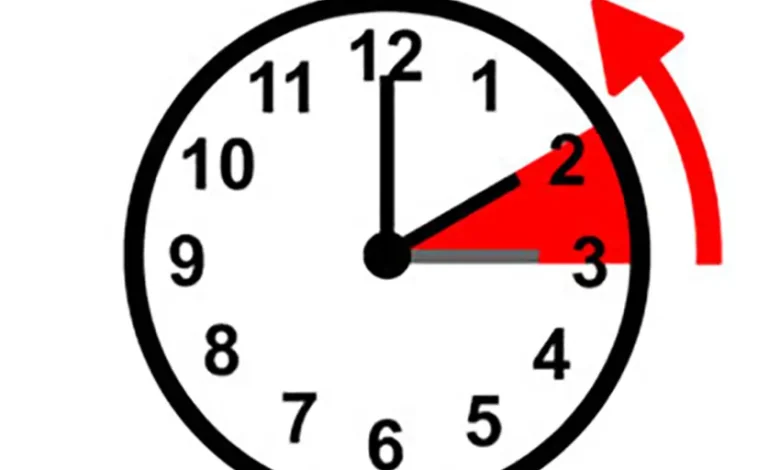Daylight Saving Time End 2025 in the US

Daylight Saving Time (DST) in the United States for 2025 commenced on Sunday, March 9, at 2:00 a.m. local time, when clocks were set forward by one hour. This annual practice aims to extend evening daylight during the warmer months. DST will conclude on Sunday, November 2, 2025, at 2:00 a.m., when clocks will be set back by one hour, returning to standard time.
What Is Daylight Saving Time?
Daylight Saving Time (“DST”) is the practice of moving the clocks forward 1 hour from Standard Time during the summer months and changing the time again in the fall.
What is the reason for daylight saving time?
DST allows us all to use natural daylight better: moving the clocks forward 1 hour in the spring grants us more daylight during summer evenings, while moving clocks back 1 hour in the fall grants us more daylight during winter mornings.
This biannual clock adjustment, commonly remembered as “spring forward, fall back,” has been a longstanding practice in the U.S. However, it has faced increasing scrutiny due to concerns over its health and economic impacts. Critics argue that the time changes can disrupt sleep patterns, increase the risk of cardiovascular issues, and lead to higher rates of workplace accidents and traffic incidents.
When Does the Time Change in the US?
Nov 2, 2025 – Daylight Savings Time Ends. Sunrise and sunset will be about 1 hour earlier on Nov 2, 2025 than the day before. There will be more light in the morning and less light in the evening.
Trump pushes Congress to make daylight saving time permanent
On Friday (11-4-2025), former President Donald Trump renewed calls for Congress to eliminate the biannual clock changes and adopt permanent DST, citing its popularity and potential cost savings. However, consensus remains elusive as lawmakers and experts debate the health, safety, and economic implications of such a change.
Is daylight savings time going away?
As of April 2025, the United States continues to observe Daylight Saving Time (DST), with the next scheduled change occurring on Sunday, November 2, 2025, when clocks will be set back one hour to return to standard time.
While there is growing bipartisan support in Congress to eliminate the biannual clock changes, no legislation has been enacted to make DST permanent. The Sunshine Protection Act, which aims to establish permanent DST, passed the Senate unanimously in 2022 but did not advance in the House of Representatives. The debate persists over whether to adopt permanent DST or standard time, with considerations including health impacts, economic effects, and public safety.
Therefore, until Congress passes a law to change the current system, the United States will continue the practice of adjusting clocks twice a year.
Daylight Saving Time History in the United States
Daylight Saving Time (DST) in the United States has a complex history marked by periods of adoption, repeal, and ongoing debate. Here’s an overview of its evolution:
Early Proposals and Initial Adoption
- 1784: Benjamin Franklin humorously suggested adjusting sleep schedules to conserve candles, an idea often misattributed as the origin of DST.
- 1918: The U.S. implemented DST during World War I to conserve energy, but it was unpopular, especially among farmers, leading to its repeal after the war.
Mid-20th Century Developments
- 1942–1945: During World War II, President Franklin D. Roosevelt instituted year-round DST, known as “War Time,” to save energy.
- 1945–1966: Post-war, the absence of federal DST regulations led to a patchwork of local observances, causing confusion across states and industries.
- 1966: The Uniform Time Act standardized DST start and end dates nationwide, allowing states to opt out entirely but not partially.
Adjustments and Experiments
- 1974–1975: In response to the energy crisis, Congress enacted a trial of year-round DST. However, public dissatisfaction, particularly concerning dark winter mornings, led to its repeal.
- 1987: DST start date was moved to the first Sunday in April, extending its duration.
- 2007: The Energy Policy Act extended DST further, starting on the second Sunday in March and ending on the first Sunday in November.
Recent Legislative Efforts
- 2015–Present: Over 30 states have introduced bills to make DST permanent or abolish it, reflecting growing public interest in ending biannual clock changes.
- 2022: The U.S. Senate unanimously passed the Sunshine Protection Act to make DST permanent, but the measure stalled in the House of Representatives.
- 2025: Former President Donald Trump renewed calls for Congress to adopt permanent DST, citing its popularity and potential benefits.

